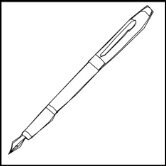I am interested in why people don’t change their handwriting to accompany their nib size.
-
Forum Statistics
354.5k
Total Topics4.6m
Total Posts -
Member Statistics
127,490
Total Members2,585
Most OnlineNewest Member
bizdveSpind
Joined -
Images
-
Albums
-
Image for posting by Number99-Ⅱ
- By Number99,
- 0
- 0
- 38
-
Dan Carmell
- By Dan Carmell,
- 0
- 1
- 92
-
Andrew Lensky Arts
- By Andrew_L,
- 0
- 15
- 22
-
0 - Oct-Nov 2024
- By yazeh,
- 0
- 0
- 99
-
USG 6
- By USG,
- 0
- 0
- 33
-















.thumb.jpg.f07fa8de82f3c2bce9737ae64fbca314.jpg)



.thumb.jpg.331e554113c33fb39d5bf3233878978a.jpg)





Recommended Posts
Create an account or sign in to comment
You need to be a member in order to leave a comment
Create an account
Sign up for a new account in our community. It's easy!
Register a new accountSign in
Already have an account? Sign in here.
Sign In Now